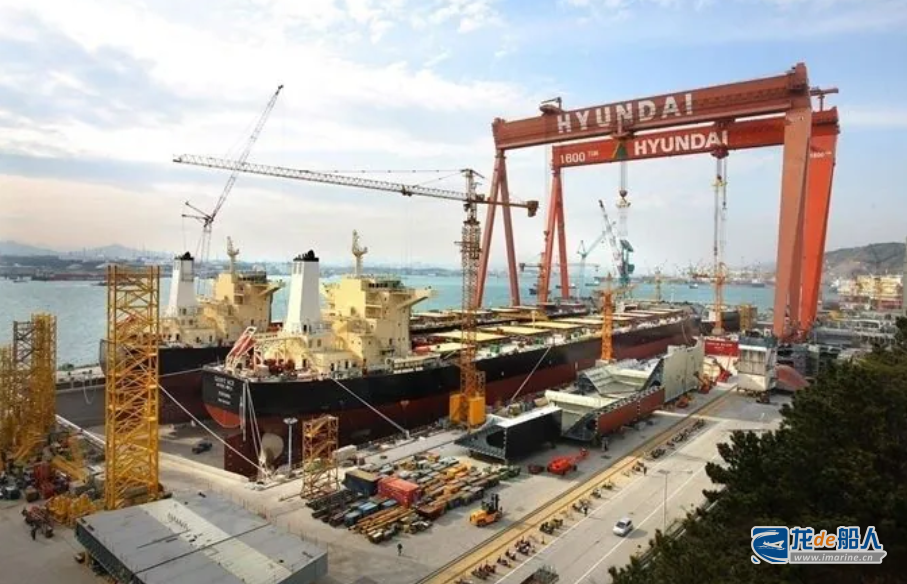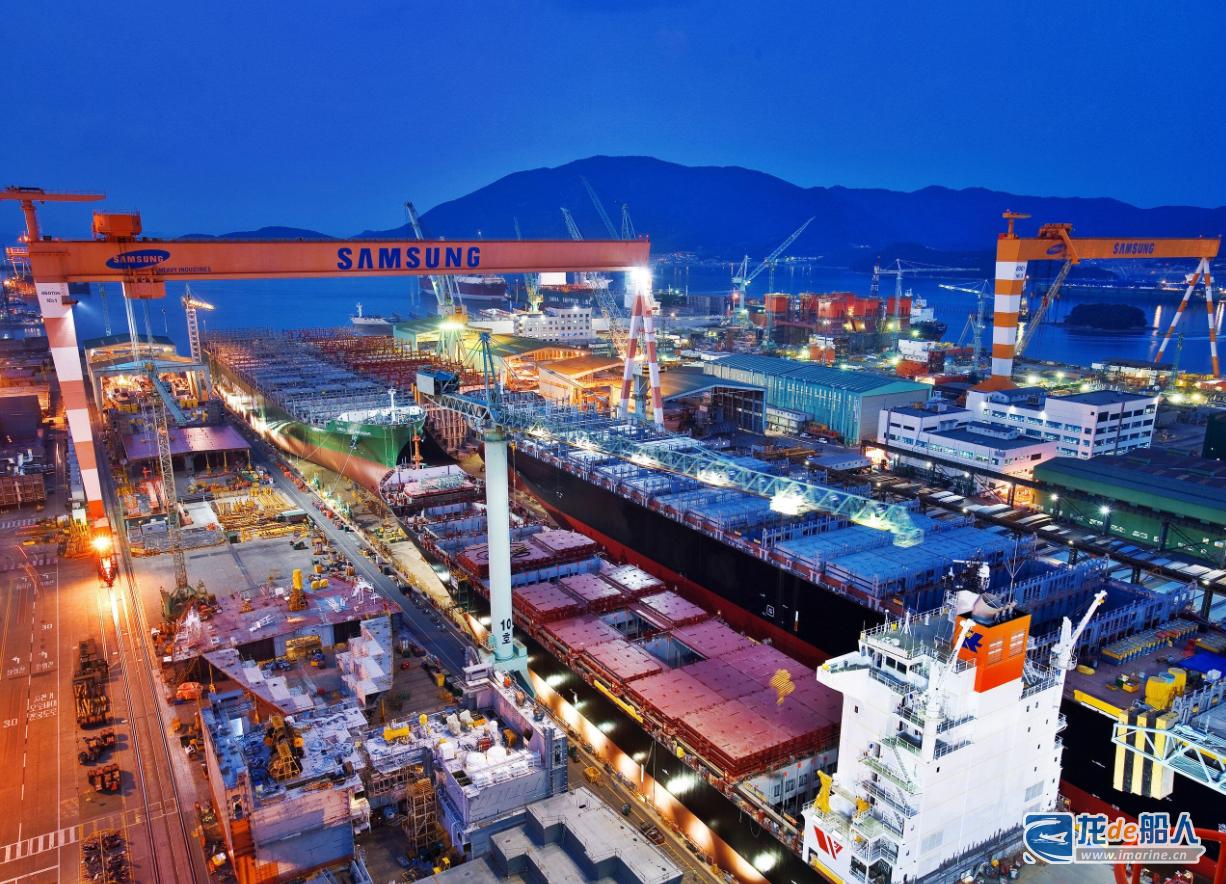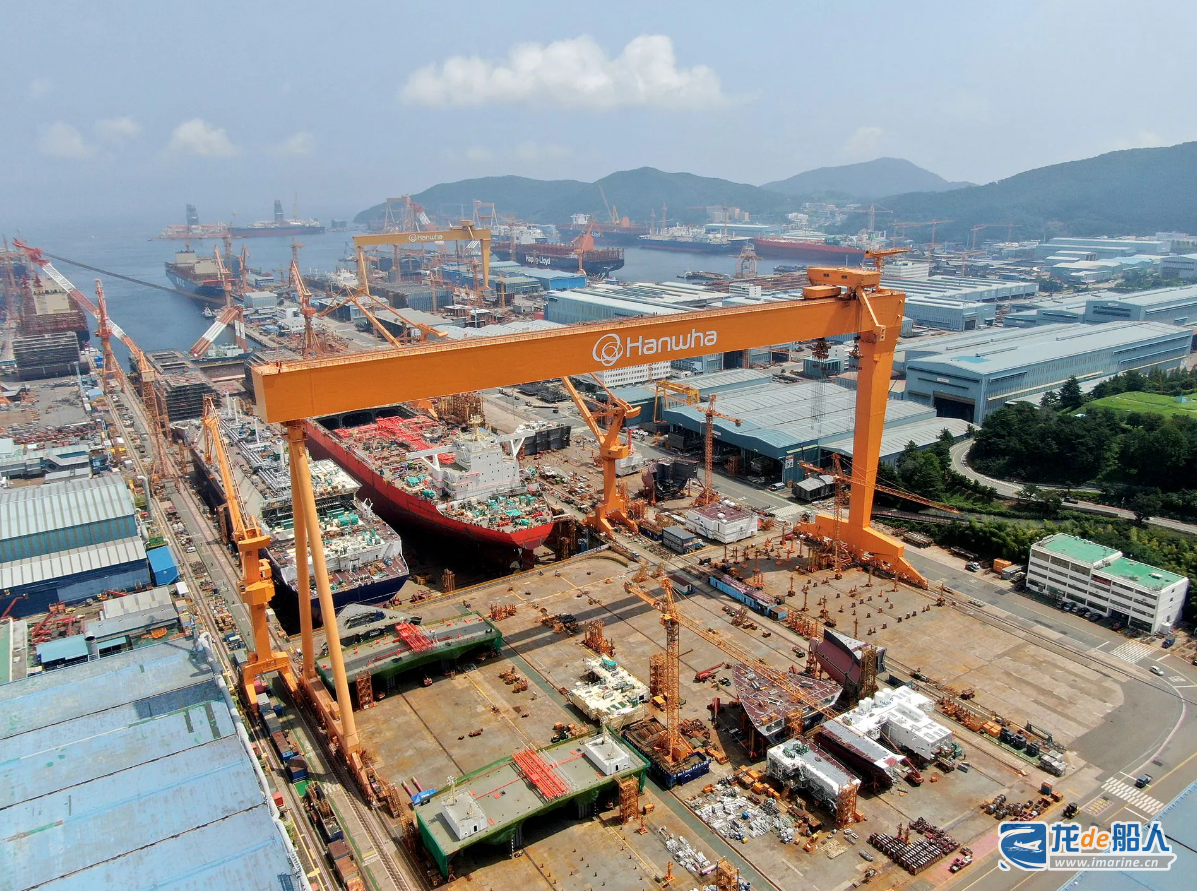South Korea’s three major shipbuilders – HD Korea Shipbuilding & Offshore Engineering (HD KSOE), Hanwha Ocean (formerly Daewoo Shipbuilding & Marine Engineering, DSME), and Samsung Heavy Industries – have accumulated their workloads for the next three to four years. Utilization rates of shipyards improved in the first half of 2024 and are expected to remain high in the second half of the year, although major shipyards may be affected by the strike factor.
According to the recent data of Korean shipbuilding industry, HD Hyundai Heavy Industries, the shipbuilding subsidiary of HD KSOE, set the production capacity at 1.358 million man-hours (M/H) in the first half of this year, the actual operating capacity was 1.275 million M/H, with an average utilization rate of 93.3%, a significant increase from 79% in the same period last year; HD Hyundai Samho set a capacity of 7 million M/H and actually operated a capacity of 8,274,000 M/H, with an average utilization rate of 118.2% for the shipyard, while HD Hyundai Mipo set a capacity of 4,850,000 M/H and actually operated a capacity of 4,919,000 M/H, with an average utilization rate of 101.4% for the shipyard.

In the first half of this year, HD Hyundai Heavy Industries’ maximum shipyard construction capacity was 5 million GT (gross tons), HD Hyundai Samho was 1.9 million GT, and HD Hyundai Mipo was 1.24 million GT, all of which were the same as in 2023. However, as the average utilization rate of shipyards increased, their actual production capacity expanded.
In the first half of this year, Hanwha Ocean set a capacity of 1,633,000 M/H and actually operated a capacity of 1,644,000 M/H, with an average utilization rate of the shipyard of 100.7%, up from 96.8% in the same period last year. During the period, Hanwha Ocean’s merchant vessel capacity was 1.3 million compensated gross tonnage(CGT) and its offshore and special vessel capacity was 3,391 M/H, representing year-on-year increases of 46.3% and 42.2%, respectively.
During the same period, Samsung Heavy Industries’ set capacity was 1.239 million M/H and actual operating capacity was 1.382 million M/H.In the first half of this year, Samsung Heavy Industries’ shipbuilding capacity was 2.29 million DWT, up 35.9% from 1.62 million DWT in the same period of the year.
HD KSOE, Hanwha Ocean, and Samsung Heavy Industries all have their own standards as the basis for their capacity units.

The recent acceleration of shipbuilding progress is the main reason for the increase in the utilization rate of the shipyards of the above shipbuilding enterprises. However, the shipyard utilization rate of more than 100% means that the shipyard workers are overloaded with heavy workloads and overtime work has increased.

Although the shipbuilding industry is entering a new boom and shipyards are operating at high capacity, major shipbuilders are now facing the risk of a union strike. This year, the unions of major Korean shipbuilding enterprises have been negotiating with the employers in terms of wages and collective agreements, and if the negotiations do not go well, the unions have secured the right to strike.
Currently, the union of HD Hyundai Heavy Industries has announced a three-hour partial strike starting from August 28 at 2 p.m. The labor unions of Hanwha Ocean, Samsung Heavy Industries, and HD Hyundai Samho are expected to participate in some of this strike action. As the shipbuilding industry enters a new boom, the demands of shipyard unions are expected to become more aggressive and the seesaw battle between labor and management will continue.


